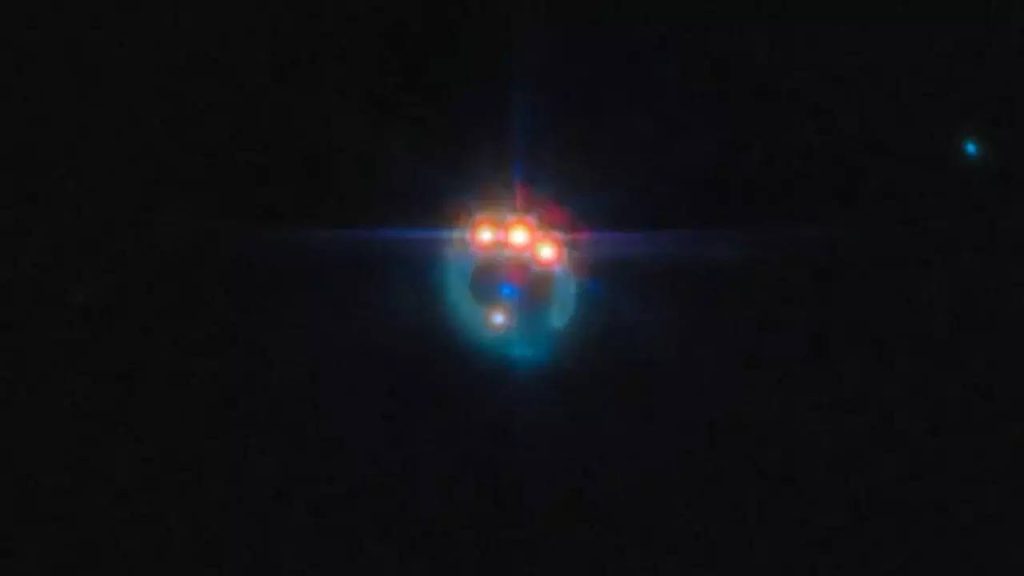Gravitational lensing occurs when a massive object, like a galaxy, bends the light from a more distant source. In this case, the strong gravitational field of a foreground elliptical galaxy distorts the light from a quasar, creating bright arcs and multiple images of the quasar. This effect makes the quasar appear as glowing rings, making it look like a jewel.
Quasars are incredibly luminous active galactic nuclei energized by supermassive black holes. Quasar RX J1131-1231 is particularly luminous because a large amount of gas and dust is falling into the central black hole. This process makes the region around the black hole glow intensely. Gravitational lensing allows astronomers to study the regions close to the black hole of distant quasars, providing valuable insights into the behavior and growth of these massive celestial objects.
Representative images of quasars
The elliptical galaxy responsible for the gravitational lensing appears as a small blue dot in the middle of the rings. The galaxy acts as a natural telescope, magnifying the light from the distant quasar, which is normally too faint to see. The image, taken by JWST’s Mid-Infrared Instrument (MIRI), is part of an observational program aimed at studying dark matter, an invisible substance that makes up most of the mass of the universe.
Measuring the X-ray emission from quasars tells us how fast their central black holes are spinning. This information provides important clues about how black holes grow over time. For example, if black holes form primarily as a result of galaxy mergers and collisions, they should collect material into a stable disk and eventually rotate at high speeds. In contrast, if a black hole expands through many small accretion episodes, it will collect material from all directions.
Observations have revealed that the black hole in quasar RX J1131-1231 rotates at more than half the speed of light, indicating that it grew by merging rather than by attracting matter from different directions. JWST’s observations of the quasar will allow astronomers to probe the nature of dark matter on smaller scales than ever before.
The gemstone ring images are not only aesthetically beautiful, but also scientifically significant: they offer a unique glimpse into the distant universe and help researchers understand the complex processes that govern the behavior of supermassive black holes and the formation of galaxies. The JWST continues to push the boundaries of our knowledge, revealing hidden wonders of the universe and providing opportunities for new discoveries.


